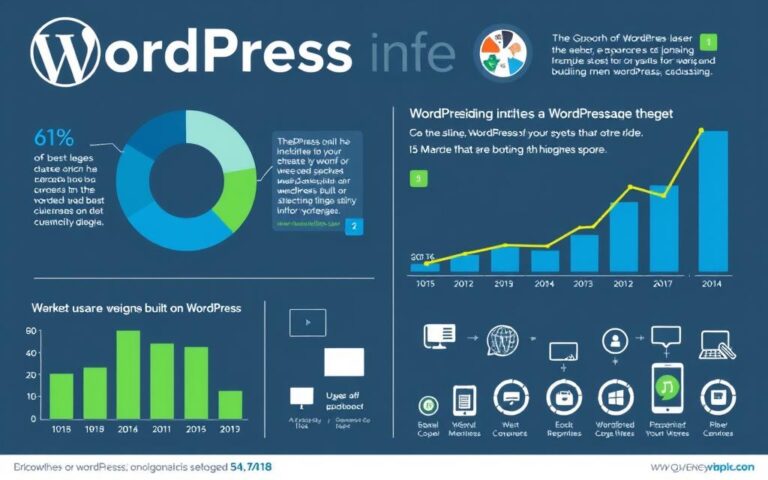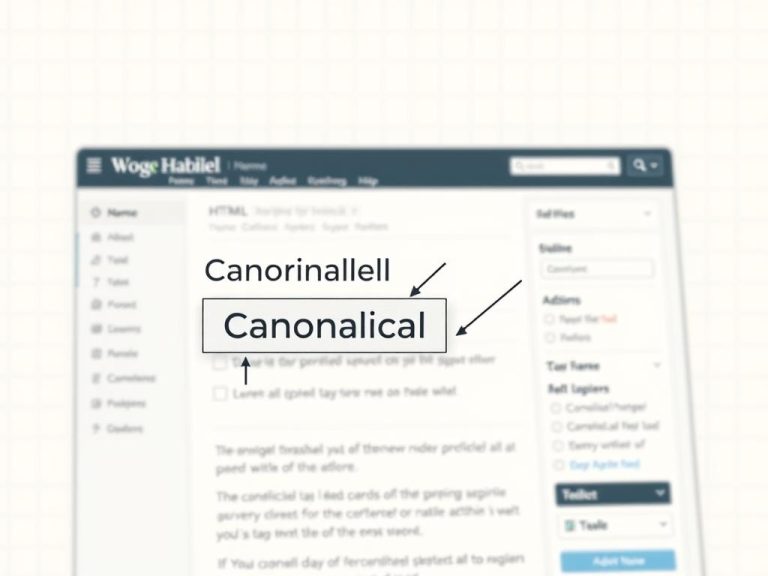Exploring the Number of Websites Built with WordPress
Starting as a simple blogging tool in 2003, WordPress has become a top choice for building websites. Today, around 488.6 million websites are powered by WordPress. This shows how popular it is. With a 62.2% market share in the CMS market, it leads against Shopify and Wix.
WordPress’s success comes from being flexible and easy to use, suitable for beginners and experts. It offers many themes and plugins. This makes WordPress sites very adaptable. These facts show WordPress’s strong position in the online world.
The Rise of WordPress as a Leading CMS
WordPress started as a simple way for people to blog. It has now grown into a powerful tool to manage websites. This journey shows the hard work and ideas from many contributors. With WordPress CMS history, it’s clear how it meets different needs, from blogs to complex online stores.
Historical Background and Evolution
Launched in 2003, it was first for bloggers. Over the years, WordPress has changed a lot. It has become more useful for all types of web users. Its use has soared, showing in its growing market share. From 15.8% to an amazing 43% in ten years. Now, over 35 million websites use WordPress, showing its wide appeal.
Current Market Share and Positioning
Today, WordPress leads the CMS market with a 64.3% share. It beats others like Shopify and Wix, which have 6.2% and 4.5% shares. Its success is due to its reliability and flexibility for different needs. In the top one million websites, it has a strong presence of 29.13%. WooCommerce, its e-commerce tool, has about a 25% share in its sector. Big names like NFL, NBC, and CNN choose WordPress for their sites. For more details on its position in the market, check out this article.
How Many Websites Are Made with WordPress?
WordPress is a giant in the online world. It powers millions of sites, showing us how popular and efficient it is. We now have fresh data on how many sites use WordPress and the overall use of content management systems (CMS).
Estimated Number of WordPress Websites
More than 810 million websites now use WordPress. This is about 43.4% of all sites on the internet. According to NetCraft, the total number of websites is around 1.19 billion. These figures show WordPress’s big impact, highlighting its role in online presence.
Statistical Analysis on CMS Usage
WordPress is at the top in the CMS market, holding a 62.8% share. This shows a clear trend towards choosing dedicated CMS platforms. In 2013, 68.2% of sites didn’t use a CMS. By 2024, this dropped to 29.7%. More and more people are choosing WordPress for its powerful features and ease of use.

| Statistic | Value |
|---|---|
| Estimated Number of WordPress Websites | 810 million |
| Percentage of Websites Using WordPress | 43.4% |
| WordPress CMS Market Share | 62.8% |
| Decline in Websites Without a CMS (2013-2024) | From 68.2% to 29.7% |
WordPress Ecosystem: Themes and Plugins
The WordPress ecosystem is alive with a rich selection of themes and plugins. These elements boost the user experience and website functionality. Users have the freedom to shape their websites to fit their specific needs and goals.
The Abundance of Themes Available
There are more than 30,000 WordPress themes available for users. About 13,000 of these are free on the official WordPress.org theme directory. Sites like ThemeForest offer another 12,500 premium options. For example, Divi is used on over 3.8 million websites, showing the wide range of designs available.
The Role of Plugins in Website Functionality
Plugins are crucial for adding new features to WordPress, with over 70,000 options available. They include e-commerce solutions like WooCommerce and SEO tools such as Yoast SEO. Contact Form 7 is widely used for managing contact forms. This variety lets owners customise their websites to match their unique needs.
https://www.youtube.com/watch?v=ldrRHxZDW-4
| Category | Number of Options | Key Features |
|---|---|---|
| WordPress Themes | 30,000+ | Custom designs, responsive layouts, and varying styles |
| WordPress Plugins | 70,000+ | Feature enhancements, security improvements, SEO tools |
| Popular Themes | Astra, Divi, Hello | Used by millions, versatile and user-friendly |
| Top Plugins | WooCommerce, Yoast SEO, Contact Form 7 | E-commerce functionality, SEO optimisation, contact management |
Trends and Future Growth of WordPress Websites
Over the years, WordPress has shown impressive growth and adaptability. Between 2021 and 2024, its share of the market increased from 39.5% to 43.3%. This shows how popular WordPress has become, with 10,000 new sites made every day. Both businesses and individuals pick WordPress for their online projects because it’s a powerful system for managing content.
Growth Rate Over the Years
WordPress leads the CMS market with a 64.3% share, leaving competitors like Shopify far behind with only 5.5%. Moreover, 36.28% of the top 10,000 websites use WordPress, linking it to successful high-traffic sites. It’s the top choice for many, including schools and companies in different fields, with 62.7% of websites with a known CMS using WordPress.
Predicted Trends in the WordPress Landscape
The future looks bright for WordPress as it evolves to meet new tech trends and user needs. Thanks to its innovation, and a wide range of plugins and themes, it’s set to stay in the lead. As people want more flexible CMS options, WordPress is expected to grow. It’s adapting to new digital trends well, making it crucial for the online world.
FAQ
What percentage of websites are built with WordPress?
Around 43.7% of all global websites use WordPress as of December 2024. That’s about 488.6 million sites.
How has WordPress evolved since its launch?
Started in 2003 as a simple blogging tool, WordPress is now a powerful CMS. It supports blogs, e-commerce, and portfolios, growing through updates and community efforts.
What is the market share of WordPress compared to its competitors?
WordPress leads the CMS market with 62.2%. It’s way ahead of Shopify and Wix, which have 6.6% and 4.5%, respectively.
How many themes are available for WordPress?
There are over 30,000 themes for WordPress. Around 13,000 are free and more than 12,500 are paid, found on sites like ThemeForest.
What role do plugins play in WordPress functionality?
Plugins vastly improve WordPress sites by adding features like e-commerce and SEO optimisation. There are over 70,000 plugins available.
What trends are currently affecting WordPress growth?
WordPress is growing fast, from 39.5% market share in 2021 to 43.3% in 2024. Innovations and easy updates help drive this growth.
Why is WordPress considered a leading CMS?
Its easy interface, flexibility, and strong community support make WordPress top for both users and businesses needing a content management solution.
How does WordPress compare to websites without a CMS?
Use of non-CMS websites has dropped from 68.2% in 2013 to 29.7% in 2024. This shows a shift towards CMSs like WordPress, which leads the market.














